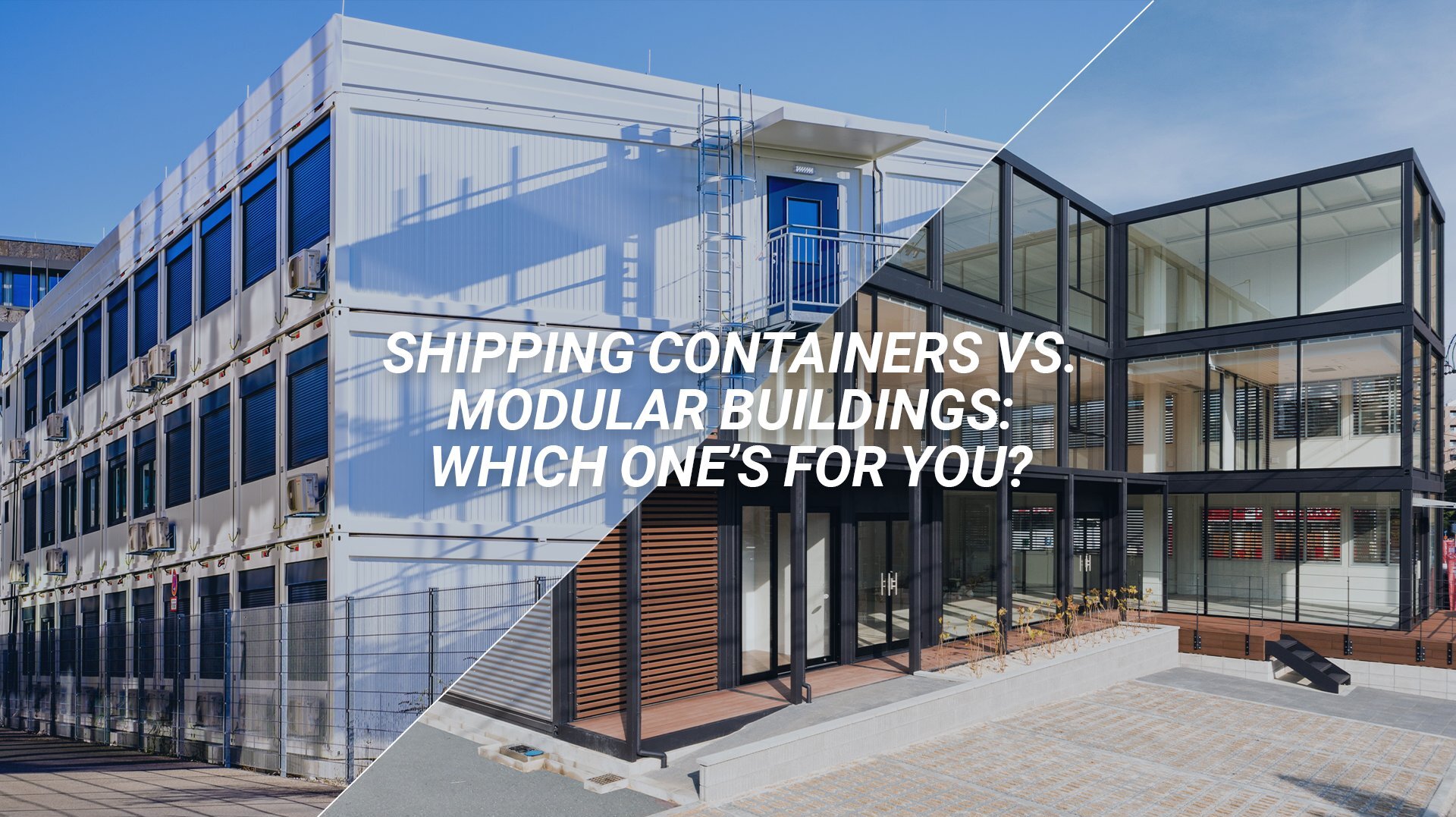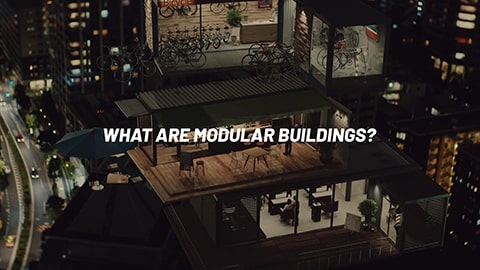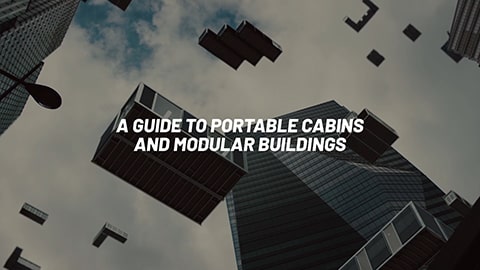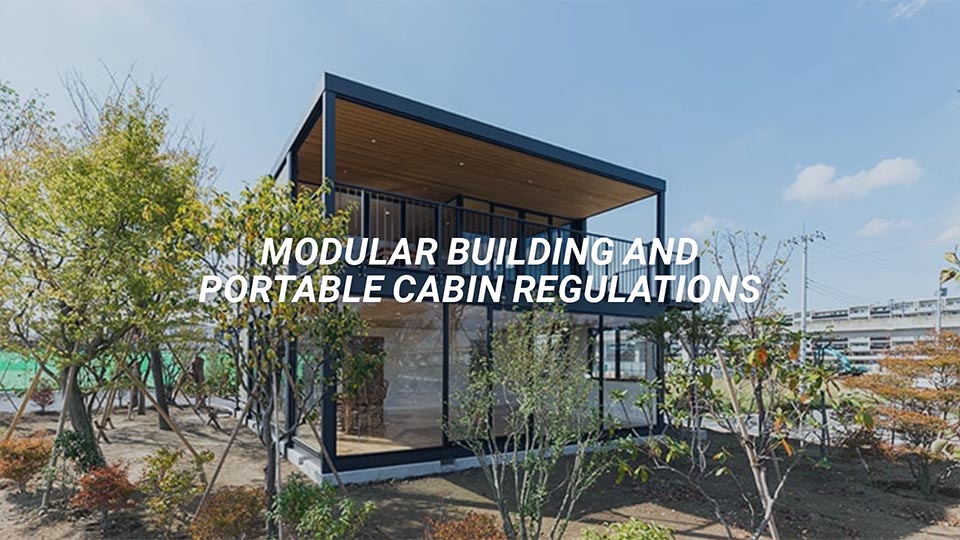If you have been considering modular construction solutions for your next building project, you may have come across two types of modular buildings – those made with shipping containers and those made with prefabricated (or prefab, in short) modular building units.
Common to both shipping containers and prefab building units are their potential to be put together relatively quickly offsite and assembled onsite into habitable structures as compared to stick-built buildings.
Why, then, would you choose one over the other? This article will examine the pros and cons of shipping containers and modular buildings to help you decide. Here’s a summary of what we’ll cover:
- What are shipping containers?
- What are modular buildings?
- Pros and cons of shipping containers and modular buildings
- Shipping containers vs modular buildings: Which is the better fit?
What are shipping containers?
Shipping containers, as their name implies, are vessels for transporting goods around the world by rail, truck, and ship. Also known as intermodal freight containers, shipping containers can fit into different forms of transport for ease of transfer from one point to another.
These large steel corrugated boxes that move 90 per cent of the goods around us, are hardy containers that are able to travel vast distances as a crucial part of our global supply chains. Given this hard-wearing and robust characteristic, it has caught the attention of the construction and architecture industry to repurpose them into buildings. This is called “shipping container architecture”.
Shipping container architecture may have emerged as far back as the late 1960s when British architectural critic Reyner Banham proposed the feasibility of using shipping containers as a “plug-and-play” type of architecture. Two decades later in 1987, Philip C. Clark patented a “method for converting one or more steel shipping containers into a habitable building”.
Today, shipping container architecture has become more common worldwide. In the US, for example, shipping container homes have become a viable alternative to traditionally built homes amongst those who appreciate the affordability and environmentally-friendly attributes of container buildings.
What are modular buildings?
Modular buildings are buildings that are constructed from standardized “modules” or “units” that bear identical design cues and specifications. Modular buildings can be prefabricated — this means that individual building units are manufactured off-site before being transported to the site for assembly.
Portable cabins are a smaller subset of modular buildings. These prefab structures are self-contained and assembled offsite, ready for immediate use once transported to their final location.
In a way, shipping container architecture can be considered a form of modular building. This is because multiple containers can be configured to form a building structure.
A key difference lies in the fact that while prefab modular building units are often solely created for modular construction, shipping container modules are repurposed from recycled freight containers.
For a more in-depth explanation, check out our article on what modular buildings are.
With the definitions of shipping containers and modular buildings sorted out, let’s now consider the pros and cons of each building type.
Shipping containers vs modular buildings: Pros

1. Cost-effective
Both shipping containers and prefab modular buildings can be more affordable to build than traditional stick-built buildings.
Depending on quality, location and size, a single shipping container can cost upwards of $1,400. By contrast, prefab modular building units are typically pricier for a project of a similar scale, but they boast better durability and customizability.
The cost of shipping containers will increase if further modifications are required to repurpose them into proper buildings.
2. Durable
Both shipping containers and prefab modular building units are built to last for a substantial amount of time.
Shipping containers are durable in the sense that they meet freight transport requirements. However, their durability may not comply with more stringent building codes.
By contrast, prefab modular buildings are more reliably durable. This is because prefab constructions are manufactured with the end goal of serving as modular building units in mind.
3. Fast to build
Shipping containers and prefab modular buildings can be faster to build than traditional stick-built buildings. This is because the units can be constructed simultaneously with the site work, in turn contributing to a shorter construction schedule.
Between shipping containers and prefab modular buildings of similar specifications, shipping container buildings may require more time to build. This is especially true if they require heavy modifications to be converted into stable buildings.
4. Customisable
Adding your personal touch is possible with both shipping containers and prefab modular buildings. As both building types are highly versatile, you have free rein to alter the design and scale dimensions by combining any number of units to suit your needs.
When customizing shipping containers, however, it’s important to note that too many modifications, such as cutting into the corners and walls will compromise their structural integrity.
This is different from prefab modular buildings, where the units are made specifically for modular construction. Their designs can even be further customized after completion, offering you greater flexibility in the long run.
5. Quality assured
As both shipping containers and prefab modular buildings are classified as constructions that need to adhere to strict building codes, you can be assured that they are safe to build and inhabit.
However, between the two, prefab building units are of a higher quality as the materials are picked specifically for construction.
This is different for shipping containers, as they are repurposed from their original function as vessels to transport cargo. Without the proper modifications, they are unsuitable for habitation.
For example, container condensation is a common problem with shipping containers, where the accumulation of moisture on their metallic surfaces can cause rusting and corrosion.
Furthermore, shipping containers are often treated with harmful chemicals to protect both cargo and container from damage during transit. There are even instances where the containers are used to transport toxic materials.
It is therefore important that you run your due checks to ensure the safety of your shipping container.
6. Eco-friendly
Both shipping container buildings and prefab modular buildings are often touted as eco-friendly alternatives to traditional stick-built buildings.
Repurposing shipping containers as buildings presents an opportunity to reduce the embodied energy of the building materials. While it is possible to purchase a new or lightly-used shipping container, this is not as sustainable as recycling an old container.
As for prefab modular buildings, they are also made using a sustainable building method where their offsite prefabrication significantly reduces construction waste. The standardized make of the units further supports the reuse of units and recycling of parts.
Shipping containers vs modular buildings: Cons
1. Permits and codes
Although the concept of modular construction with shipping containers and prefab modular units is not new, certain places in the world are still unfamiliar with it and do not have the necessary checks in place. In areas where regulations concerning shipping containers and prefab modular units are less developed, building materials may not be readily available.
That is why it’s always important to check on the relevant building restrictions and regulations before starting a project. This ensures that your building complies with the necessary regulations.
2. Hidden costs
While shipping containers are widely touted as more affordable building alternatives, there could still be sizable additional costs. The containers themselves may be affordable, but they come with caveats – for example, they could have been heavily used and sustained considerable damage.
Repairing these containers, on top of modifying them to make them habitable, will set back your budget significantly.
For prefab modular building units, prices quoted upfront may also not include additional work such as electrical, plumbing and ducting. However, since prefab modular units are manufactured specifically for habitation, this generally minimizes the need for repairs and structural modifications.
3. Restricted by unit dimensions
Shipping containers and prefab buildings often have uniform dimensions. This makes them modular, where multiple units can be combined to create different configurations. However, it is this same modularity that limits their dimensions.
Between prefab units and shipping containers, however, prefab units are far more flexible. This is because manufacturers have more room to create new designs and accommodate customizations.
4. Faster rate of depreciation
Assuming all other environmental factors affecting the value of buildings are constant, shipping containers and prefab modular buildings tend to depreciate faster than conventionally constructed buildings.
Proper maintenance ensures that both building types are able to keep their value for longer.
5. Lower load bearing capacity
Compared to traditional buildings, both shipping containers and prefab buildings have lower load bearing capacities. This is owing to the leaner materials that are typically used to make them easier to ship and transport.
For prefab buildings, however, their load bearing capacity may vary depending on the type of materials used to manufacture the prefab units and whether they are meant to be used for temporary or permanent structures.
Shipping containers vs modular buildings: Which is the better fit?
While modular buildings and shipping containers bear some similar advantages, modular buildings would be the better choice if your project’s primary concerns are safety, durability and better customizability.
How can Sankyo Frontier help?
With modular solutions forming the core part of our business at Sankyo Frontier, we’re here to help you with our range of modular building units. Whether you are looking to put together a space for short-term use or something more permanent, you’ll find that our versatile modular solutions are well-suited to meet your needs.
Read on to find out more about what Sankyo Frontier has to offer.
Our available solutions and products
Sankyo Frontier offers two primary modular products: the MS1 and CT-J. Both are available for rent or sale, and each one comes with its own separate set of capabilities as follows:

For the full specifications, visit our Modular Solutions section and submit a request for our catalogues.
Visit our FAQ page to learn how we build and optimise our modular units for your needs.
Contact us
If you have a project in mind or want to know more about our products, contact us. We’re happy to assist with any questions you have.





